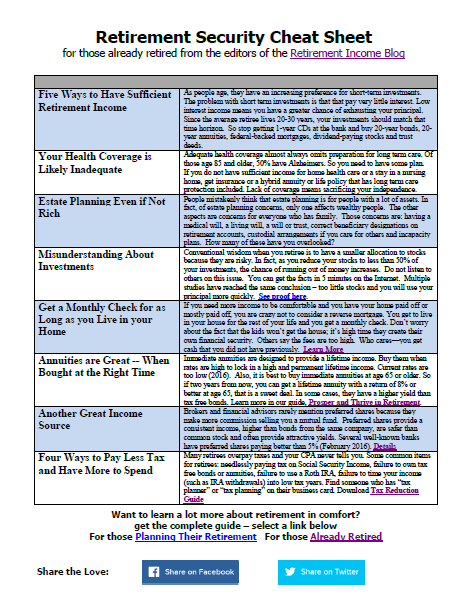Generally to make IRA contributions, you'll need working revenue from which you contribute. However, there is a retirement savings option for a nonworking partner. The non-working partner can make contributions to either a tax deductible (traditional) Ira or a Roth Ira based on his working spouse's revenue. This exception provides 'soon-to-be' retirees both a way to pack more into their retirement savings, and decrease taxable revenue. Each--utilizing a Roth IRA--may create non-taxable income for later use.
To reap the benefits of the nonworking partner retirement savings option, two requirements should be met:
• Both spouses must file jointly
• The income of the working partner should cover the entire contributions of both spouses
The maximum contribution that every spouse could contribute in 2011 is $5,000 plus an additional $1,000 'catch-up' contribution if you are 50 or older. That is an additional $6,000 savings contribution by the nonworking spouse per year for all those last 5 or so yrs before a 'working spouse' retires.
Retirement Savings Option for Roth IRA Contributions
Each spouses, if filing a joint tax return, can contribute the maximum to their own Roth IRAs as long as the working spouse's revenue is under $167,000 (or $167K for short). Between $167K-177K contributions of both partners are phased to $0. Roth IRA contributions are not tax deductible but are made with after tax contributions. And there are not restrictions according to the working partner being covered by a retirement program at work.
Retirement Savings Options for Deductible (conventional) IRA Contributions
Both spouses may contribute to their very own deductible IRAs. However each spouse's contribution has different limits related with the working spouse's income, depending on whether or not the working spouse is covered by a retirement prepare at work.
|
Retirement Savings Options for Deductible and Roth Contributions for Both Spouses: |
||||
| 'At work' status of working spouse | Spouse | IRA type | Contribution | Working spouse's Income range |
| Covered by retirement plan | Working spouse | Deductible IRA | Maximum | Below 89K |
| " | " | " | Partial | 89K to 109K |
| " | " | " | None | Above 109K |
| Not covered by retirement plan | Both working and nonworking spouse | Deductible IRA | Maximum | No income limit |
| Whether covered or not covered | Nonworking spouse – for Roth and Deductible IRA, Working spouse – for Roth only | Deductible IRA or Roth IRA | Maximum | Below 167K |
| " | " | " | Partial | 167K to 177K |
| " | " | " | None | Above 177K |
In the case where there's no retirement strategy at work, both the working and nonworking partner have the retirement savings options to make the most contribution no matter how high the working spouse's earnings is.
If the working spouse has a retirement strategy at work, his contribution is going to be restricted and eliminated commencing when his income actually reaches $89K (see table for complete contribution limits). Nevertheless, the nonworking spouse's contribution will not begin to be phased out till the working spouse's earnings actually reaches $167K.
For example, if Mr. Smith is covered by a retirement plan at work and generates $120K, he will not be able to make a deductible contribution to an Ira. His nonworking spouse, however, has the retirement savings options to make the highest contribution to her deductible Individual retirement account or her Roth Individual retirement account. Mr. Smith, as an alternative could contribute the maximum to his Roth IRA.


Leave a Reply